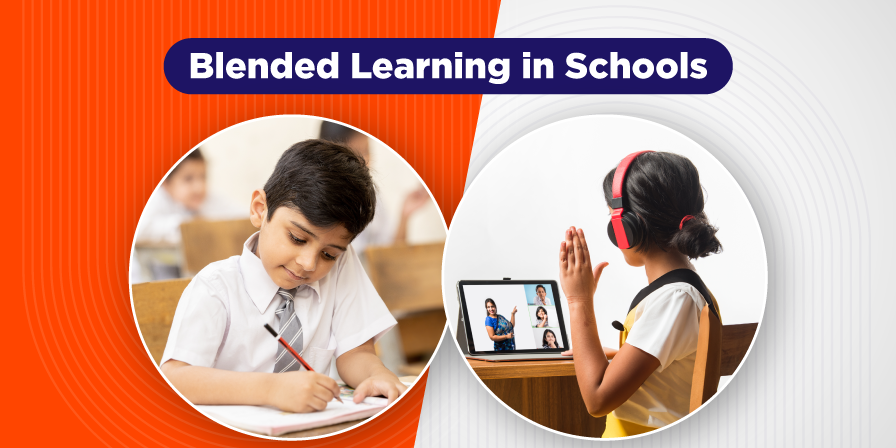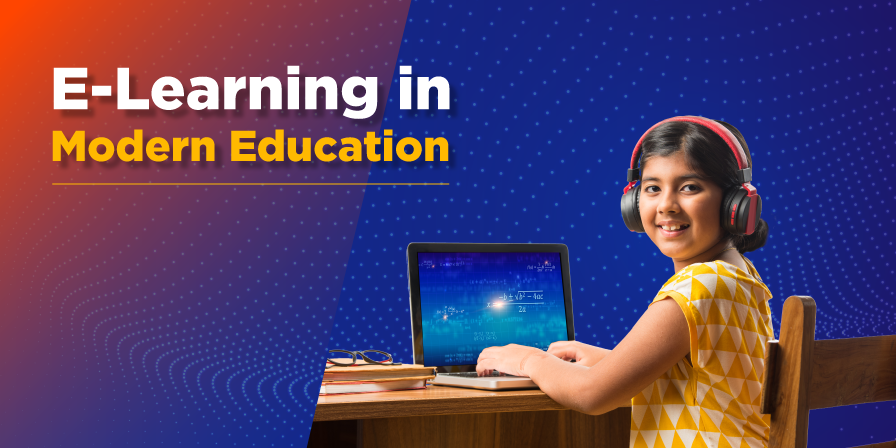Advantages and Disadvantages of Blended Learning in Schools

Subscribe to our newsletter
Blended learning is an educational approach that seamlessly combines traditional classroom methods with modern digital tools, offering students a more dynamic and flexible learning experience. This method integrates face-to-face instruction with online resources, allowing students to benefit from the structured guidance of teachers while exploring interactive digital content at their own pace.
As schools strive to improve student engagement and outcomes, blended learning is becoming increasingly important. By merging the strengths of both traditional and digital platforms, it not only enhances the quality of learning but also ensures students are well-prepared for the demands of a technology-driven future.
The Purpose and Importance of Blended Learning for Schools
Blended learning aims to improve learning outcomes by offering a balanced, comprehensive approach to education. It helps increase student engagement, making learning more interesting and interactive while also equipping students with essential skills for the future. Schools adopting blended learning can offer a more adaptable and efficient learning experience that caters to various learning styles.
Additionally, blended learning ensures students are prepared for a tech-driven world where digital fluency is key. It also enhances teaching effectiveness by providing educators with more tools and resources to engage students in meaningful ways, thereby transforming traditional methods into more dynamic learning experiences.
Advantages of Blended Learning
Improved Learning Outcomes
Blended learning merges the best aspects of traditional in-person education with online learning tools, creating a more engaging and productive environment for students. This integration allows students to gain information in multiple ways, leading to a deeper understanding of concepts and better academic results over time.
Flexible and Personalised Learning
One of the key advantages of blended learning is the flexibility it offers. Students can learn at their own pace, revisiting digital content as needed or moving ahead if they grasp concepts quickly. This personalised approach ensures that slower learners receive the support they need while advanced learners can access enrichment materials to further their progress.
Increased Student Engagement
The use of digital tools in blended learning significantly increases student engagement. Interactive platforms, educational games, and multimedia content make learning more exciting and relevant to today’s tech-savvy students. As a result, students are more motivated to participate actively in lessons and assignments.
Cost-Effectiveness for Schools
Blended learning can also help schools reduce costs by optimising resources. For example, using digital materials instead of physical textbooks cuts down on expenses, while digital assessments can streamline grading processes. These savings enable schools to reallocate funds toward other essential areas, such as technology upgrades or professional development.
Technological Exposure for Students
Early exposure to technology through blended learning ensures students develop the digital skills necessary for future careers. By using digital tools and platforms in their daily education, students become more comfortable and proficient with technology, fostering digital fluency, which is critical in today’s workforce.
Disadvantages of Blended Learning and How to Overcome These
Teacher Training Requirements
Implementing blended learning effectively requires teachers to be trained in using digital tools, which can be time-consuming and resource-intensive. Schools must invest in ongoing professional development to ensure teachers are confident and competent in using these tools. By equipping educators with the right skills, schools can ensure the successful implementation of blended learning.
Technology Dependence
Blended learning relies heavily on digital infrastructure, which can be a challenge for schools without adequate resources or students with limited access to devices. It’s essential that schools are equipped with the right technology to support digital learning, including reliable internet access and sufficient devices for students. Providing equitable access to technology is crucial for ensuring all students can benefit from blended learning.
How LEAD Group Supports Blended Learning in Schools
LEAD Group offers a comprehensive suite of solutions that empower schools to implement blended learning effectively. From teacher training to advanced digital tools, LEAD Group ensures that both students and educators can benefit from a more engaging and flexible learning experience.
- Comprehensive Teacher Training and Professional Development
LEAD Group provides extensive teacher training programs to help educators effectively implement blended learning. Through these programs, teachers learn how to use digital tools and resources in a way that enhances the classroom experience, ensuring that students benefit from both traditional and online learning.
- Smart Classrooms and Digital Tools
LEAD Group equips schools with smart classrooms, integrating the latest digital tools to create an interactive and engaging learning environment. These tools enhance traditional teaching methods, making lessons more dynamic and providing students with more opportunities to participate in their learning journey.
- Digital Textbooks and Learning Management Systems (LMS)
LEAD Group offers digital textbooks and a comprehensive learning management system (LMS) that make learning more accessible and flexible. Students can access these materials anytime, anywhere, which supports personalised learning. LEAD Group’s Techbook further enhances this by providing an innovative solution for digital learning, enabling students to interact with content in new and engaging ways.
- School ERP and Administrative Tools
LEAD’s School ERP and administrative tools streamline school operations, allowing administrators and teachers to focus more on student learning. These tools simplify tasks such as attendance, grading, and reporting, improving the efficiency of school management and ensuring that academic and non-academic activities run smoothly.
- LEAD Student App
The LEAD Student App not only makes learning fun and exciting for students but also ensures that parents stay involved in their child’s educational progress. The app features live and recorded classes, gamified learning experiences, and tools for submitting assignments and homework. It even has a dedicated parents’ section, making it a complete resource for seamless learning both in and out of the classroom.
- Seamless Learning Anytime, Anywhere
LEAD Group enables students to continue learning beyond the classroom with its digital resources and tools. Whether at home or on the go, students can access lessons and materials at their convenience, ensuring that they stay on track with their learning, even outside school hours.
Conclusion
Blended learning is a critical approach for schools looking to stay competitive and offer students the best possible educational experience. By combining traditional teaching with digital innovation it helps students develop essential skills while improving learning outcomes and engagement.
For schools interested in exploring how to implement blended learning seamlessly, LEAD Group offers comprehensive solutions that provide the tools, training, and resources necessary to succeed in today’s evolving educational landscape.




